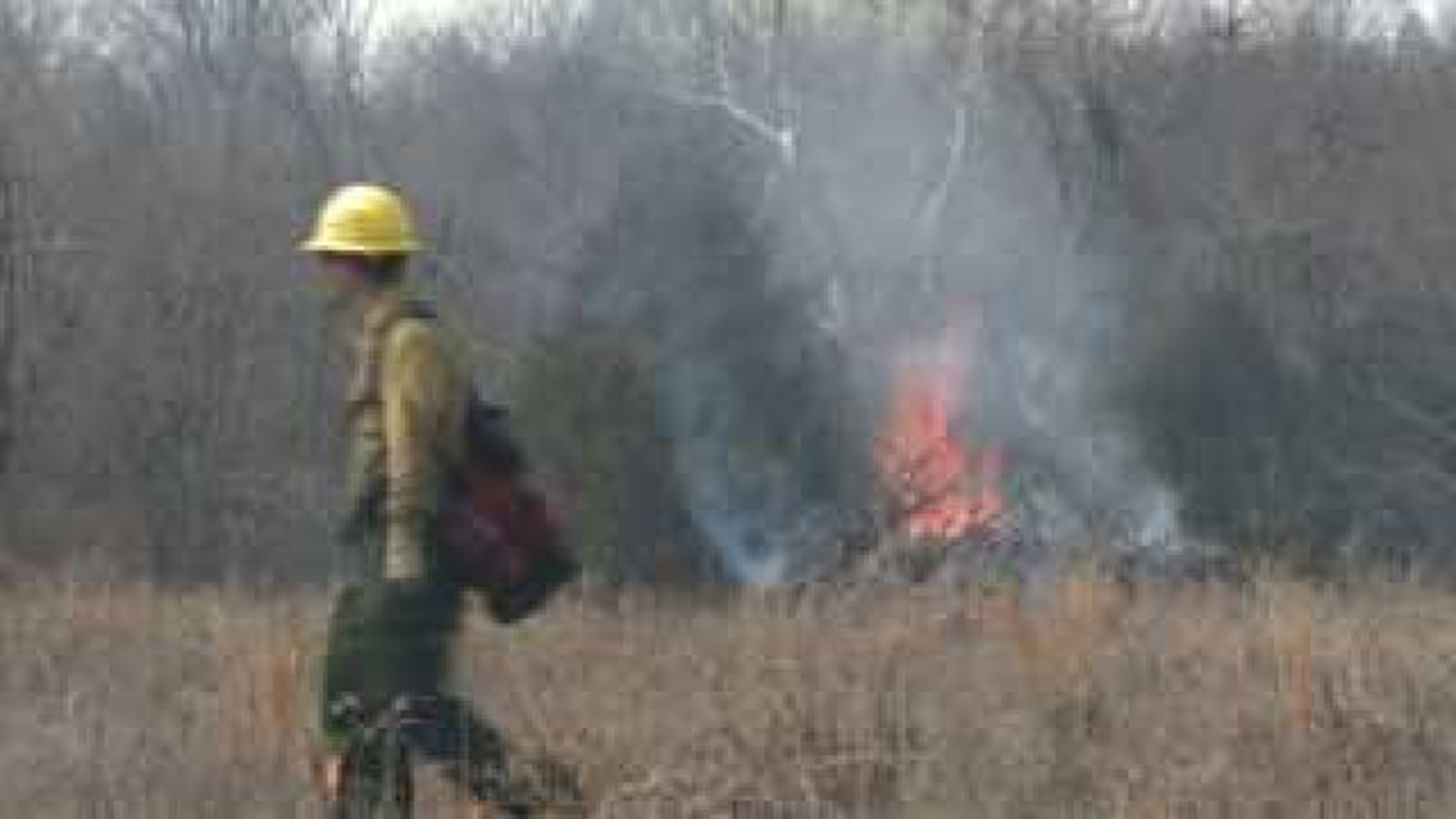The city of Fayetteville had a controlled burn around Lake Fayetteville Wednesday in an effort to restore natural vegetation.
“This area had been just kind of let go natural for several years,” said Byron Humphry, Fayetteville Parks Maintenance Superintendent.
Chloeta Wildland fire professionals from Oklahoma scouted the area, and discussed a burn plan that involves evaluating wind speed, moisture and humidity.
“The thing with a controlled burn is that you have all your people in place ahead of time, you have your firebreaks in place ahead of time before you ever light the match, you also have a burn plan that has specific conditions that you burn under,” said Tim Stanton, Fuel Specialist for Chloeta Fire.
“We have a drip torches that are mixed with a fuel, a mixture of three parts diesel to one part gas and the fire actually drips from the drip torch,” said Stanton.
The burn also reduces the risk of wildfires. The Eastern Red Cedar Tree is abundant in the area and it increases the risk of wildfires as it burns with high intensity.
Fayetteville city officials say the area is consumed with non-native plants which can be harmful to the eco-system and the habitat.
“A lot of these grasses can clump up to the point where they have a thatch and they get too thick and they crowd themselves out and this helps thin it out,” said Stanton.
Underneath the thick grass are native plants like Blue Stem and Indian grass which provide food for birds, insects and pollinators.
“The neat thing is that we haven`t seeded those. Just by controlling the invasive species after we conducted the first burn those grasses came back from a native seed bank that has just layed dormant for years,” said Humphry.
The city started the prairie restoration project four years ago to bring back native plants.
“In the early 1800’s when we had more fire on the landscape than we do now because we have too many houses and we are not able to burn what we used to burn and that’s what kept these grass fields maintained at that time,” added Stanton.
The city plans to burn the property around Lake Fayetteville every few years.

